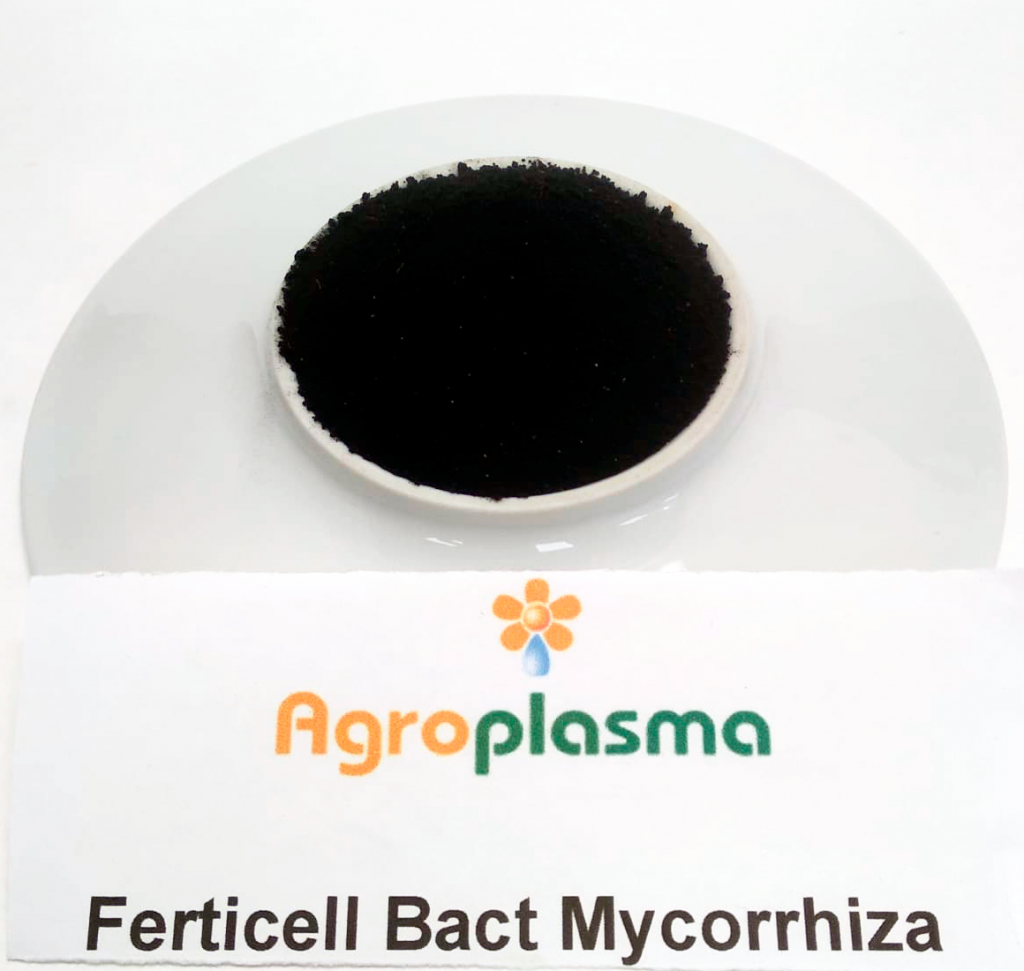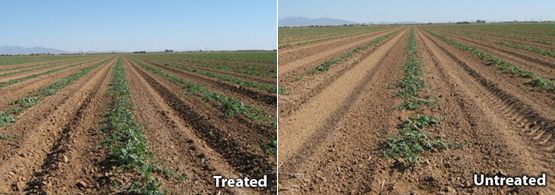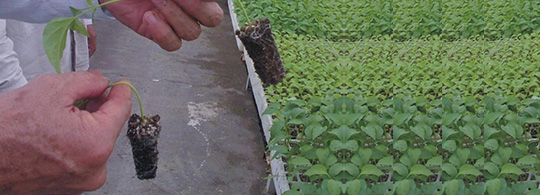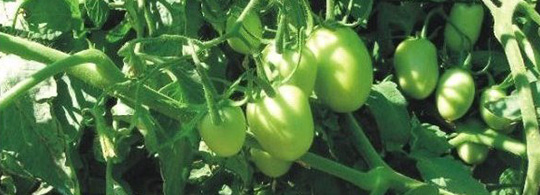Ferticell Bact. Mycorrhiza
| TECHNICAL DATASHEET | |
|---|---|
| Ferticell Bact. Mycorrhiza |

FERTICELL-MYCORRHIZAE (Glomus Intraradices / Rhizophagus irregularis).
MYCORRHIZA is an environment friendly Phosphate solubilizing and nutrient mobilizing fungal product containing Vesicular Arbuscular Mycorrhizal (VAM) named Ecto & Endo- Mycorrhizae. It defines the mutually beneficial relationship between the plant and root fungus. It also provides protection to the plants from disease causing organisms to the roots. It helps in improving soil fertility. Vesicular arbuscular mycorrhiza (VAM) as the most popular endomycorrhiza is a kind of mycorrhizae whose hyphae penetrate the cells of plant roots by producing balloon-shape structures (vesicles) or dichotomously—branching invaginations (arbuscules).
MYCORRHIZA release powerful enzymes into the soil that dissolve hard nutrients such as organic nitrogen, phosphorus, iron and other tightly bound nutrients.
– Increase the surface absorbing area of roots 100 to 1000 times
– Healthier and more dense root system
– Improved ability to get nutrients from the soil
– Significantly lower need of irrigation
– Improves tolerance from drought, salt and prevents nutrition imbalance
– Increase plant resistance to pathogens, fungal diseases caused by fusarium and phytophthora
– Reduce the use of DAP up to 40% in single season
– Decrease mortality rate of plant after transplantation
– Improves organic matter soil structure
Concentrated Mycorrhizae with Root Development Base.
A superior quality microbial fungus enriched with large amount of plant growth stimulatory product. It is an excellent yield enhances for crops which boost growth rapidly. Concentrated Mycorrhizae is an advanced formulation plant supplement that promotes seedlings, Cutting, transplanted and direct sown crops.
Mycorrhizae is non-phytotoxic and for soil or foliar applications.
It can be applied through drip irrigations, fertigations, or sprayer systems.
This formulation is in powder form with 3500 IP/gm.
Direction for use: 200-500 gm/ hectare for root, soil and seed treatment.
Seed treatment assures an increase in yield by 15%.
How To Add Mycorrhizae To Soil
Plants for millions of years have depended on the mutually beneficial association with the mycorrhizae fungi. This symbiotic relationship has been observed for almost every plant in its natural habitat. The association has been known to aid plants in water and nutrient absorption from the soil.
mycorrhizae, as the name depicts, is a fungus and the root of a plant.
“Myco” means fungus, and “Rhizae” means root.
There are mainly two types of mycorrhizae, the endo mycorrhizae and the ectomycorrhizae. The endo mycorrhizae are also called arbuscular mycorrhizal fungi.
They are the more important of the two types since they associate with most plants, over 90%. These fungi are usually naturally present in the soil.
But heavy agricultural practices like repeated tillage and long farrowing may have depleted them. It is then necessary to add these important fungi to the soil; here is how.
Getting The Mycorrhizae To Add
Ways Of Adding Mycorrhizae To The Soil
mycorrhizal , it is best to add it while the root is still young.
The early root colonization will allow the plant to benefit from the association maximally.
The goal when applying Mycorrhizal Fungi is to make direct root contact.
This significantly increasing your plant’s reach and provides additional ability to access the water and essential minerals it requires to grow.
In contrast to synthetic chemicals and common fertilizers, Mycorrhizal Fungi cannot harm your plants if used excessively or frequently.
Seed Application Method
This is the best method for adding mycorrhizae to the soil.
The inoculant is added to the seeds before planting.
THis will enable colonization of the roots to begin as soon as possible, resulting in a close bond.
As the seeds germinate, the spores or colonized root fragments begin the colonization at the contact of living root tissue.
The establishment of the mycorrhizal association will take a few weeks.
The seed application method involves inoculating the seeds.
The inoculant comes in powdered form, and it is best to use it in liquid form.
This achieves similar results as the seed treatment methods with the liquid or powdered forms.
Take the following steps to do the seed treatment with the mycorrhizae inoculant.
- Decide the best form of inoculant for your seed, either the powdered or liquid (seeds with hairy surfaces like oat, barley, wheat, etc. that the powdered form can treat).
- Spray the seeds lightly with the liquid inoculants or mix a few portions of the inoculant with other seed treatment liquids.
- You can alternatively soak the seeds in the inoculant and water mix for about 24 hours.
- The powdered inoculant is sprinkled on the seed and mixed for even distribution.
- If you are using a seedbox, the powder can be sprinkled as the seeds are being placed.
Transplanting Methods
The fungi can be added after the seeds have been planted in several ways.
The mycorrhizal inoculants can also be added when seedlings are being transplanted.
For the transplant, you can rub the powdered on the root ball.
Before putting the seedlings, you can pour the inoculants at the base of the trenches.
After the transplanting, you can aslo add it in furrows near the base of the seedlings.
In this case, you can use the powdered form.
This will also allow the association to start early enough for practical benefits.
Established Plants Methods
For established plants, it is also possible to add mycorrhizae to the soil around them.
Applying granular mycorrhizae to established plants is also advantageous.
As soon as the roots reach that region, they will inoculate and colonize.
This may invariably require more volume of inoculants than the seed treatment method.
To apply them to the soil, combine them with compost .
This method will be more effective for porous soil where the inoculant can easily percolate.
The mycorrhizae will establish the association as soon as they meet with root tissues in the soil.
This works particularly well for indoor or potted plants.
It is good to remember watering the soil after the spraying to enhance the percolation.
Add a well-covered drip line and/or some mulch.
With sunlight present, mycorrhizae cannot survive.
Take Caution
For an effective mycorrhizae result, it is essential to take note of some things.
- You should give the mycorrhizae time to established before the use of fungicides. About three weeks
- It is best to use organic fertilizers at this time. Increased soluble nitrogen and phosphorus hinders the mycorrhizal association.
- Less tilling, more compost, humates, and ORGANIC fertilizers enhance the growth of the mycorrhizae.
- You should not used Mycorrhizae as a foliar spray, it is important to remember that.
- Maintain in a cool, dark area, away from direct sunlight.














